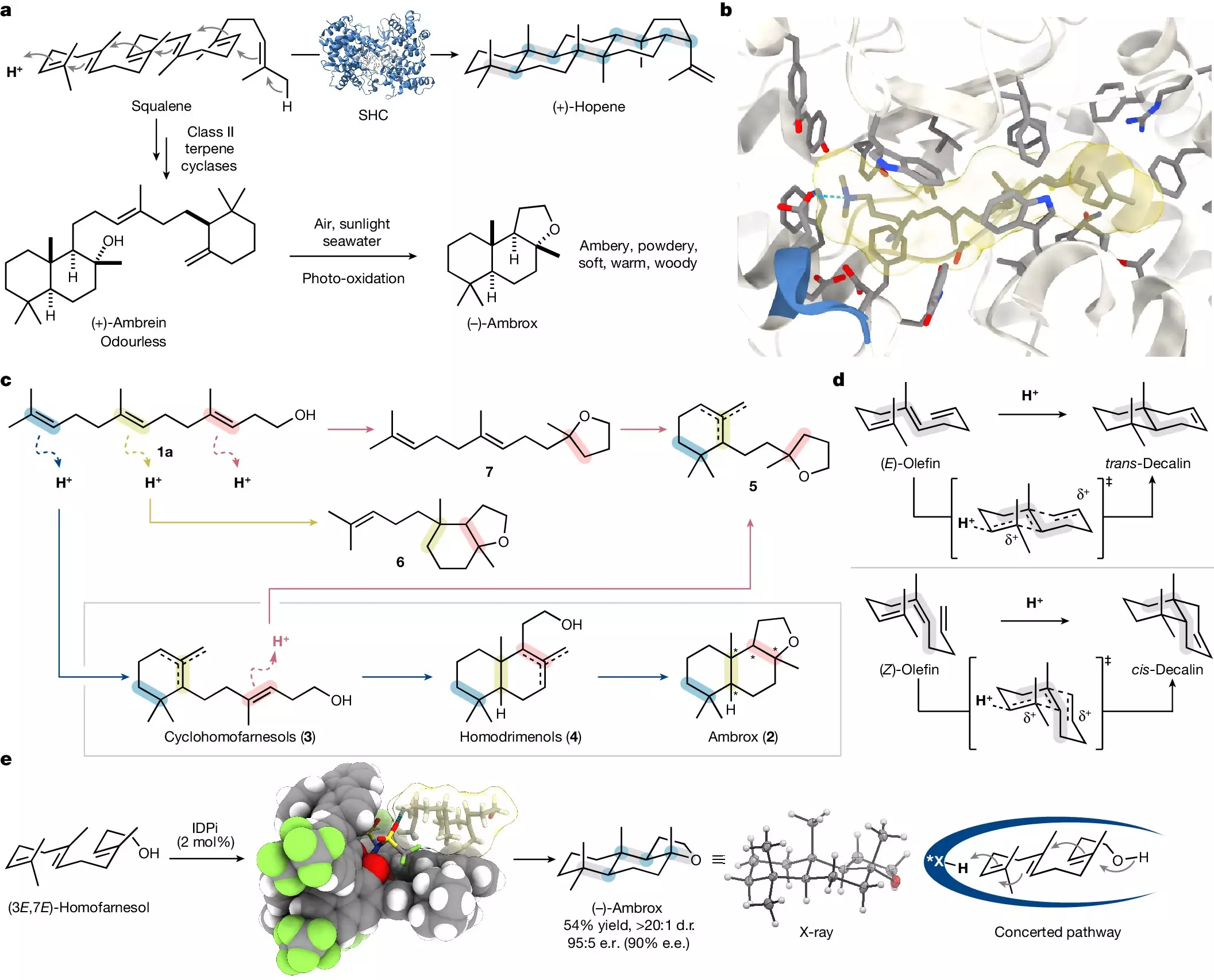From the dawn of civilization, humanity has held an intrinsic fascination with scents. Perfumes have transcended mere aesthetics to embody a blend of health, status, and cultural significance. Ancient cultures recognized the power of aroma; it was not only an olfactory experience but also a means of connection to the divine, a representation of purity, and a tool for social hierarchy. Perfumes have consistently symbolized luxury and well-being, and this age-old reverence for fragrance sets the stage for modern scientific inquiries into synthetic perfumery.
One of the most coveted components in the world of fragrance is ambrox, a complex molecule traditionally sourced from ambergris—a waxy substance expelled by sperm whales. For centuries, this natural fragrance played a crucial role in perfumery, where a mere 30 tons are harvested each year despite its scarcity. The enigma of ambrox lies in its chiral nature, meaning only a specific mirror image of the compound delivers the desired scent. This stereoselectivity poses significant challenges for chemists aiming to replicate it efficiently. Fortunately, advancements have allowed the synthesis of ambrox from more sustainable sources, particularly through clary sage oil, but the complexity of extraction and the fluctuating availability of raw materials have left room for innovation.
Recent developments have marked a turning point in ambrox synthesis. A pioneering research group, led by Professor Benjamin List of the Max Planck Institute for Coal Research, has unveiled a laboratory method to synthesize ambrox from relatively simple molecular precursors. The group’s findings were published in the prestigious journal Nature and represent a harbinger of sustainable practices in the fragrance industry. This innovative approach eliminates the need for whale-derived ambergris entirely, aligning with contemporary ecological ethics and sustainability outreach.
At the core of this breakthrough is a technique called catalytic asymmetric polyene cyclization, which draws inspiration from natural processes employed by living organisms. This method is an attempt to mimic the intricate biochemical pathways utilized in nature to create complex compounds. Dr. Na Luo, a key researcher on the project, cites nature itself as both a challenge and a guiding principle, stating, “Imitating nature in the laboratory is a major yet appealing challenge for chemists.” This connection to nature serves as a reminder that the most profound solutions often lie in the study of natural systems and their methodologies.
The synthesis commences with nerolidol, a renewable building block found in various plant sources. In collaboration with BASF, the research team effectively transforms nerolidol into homofarnesol, from which ambrox is then selectively synthesized. The application of a novel, highly acidic catalyst and fluorinated solvent creates an effective environment for this molecular transformation, yielding the desired product in a remarkably efficient one-step process. The significance of this advancement cannot be overstated; whereas traditional methods could take up to four days, List’s group has designed a process that produces results overnight, underscoring the potential benefits of speed and efficiency in chemical synthesis.
This innovative synthetic method has profound implications for the fragrance industry and beyond. With the dual capacity for catalyst recovery and solvent reuse, the process aligns well with sustainable practices that are increasingly demanded by consumers and regulatory bodies alike. Furthermore, the ability to easily scale the synthesis process makes it a viable alternative to conventional extraction methods, potentially revolutionizing how fragrances are produced.
The journey toward reconstructing ambrox in the laboratory exemplifies a significant stride in the intersection of chemistry, sustainability, and perfumery. As scientific advancements continue to unfold, the lessons learned from these breakthroughs may offer pathways to not only enrich modern perfumery but also redefine its ethical landscape. This extensive effort to encapsulate nature’s complexities within a laboratory setting is testament to the innovation possible in the quest for aromatic excellence. Thus, the art of fragrance evolves with science, paving the way for a more sustainable and enriched future in olfactory experiences.

